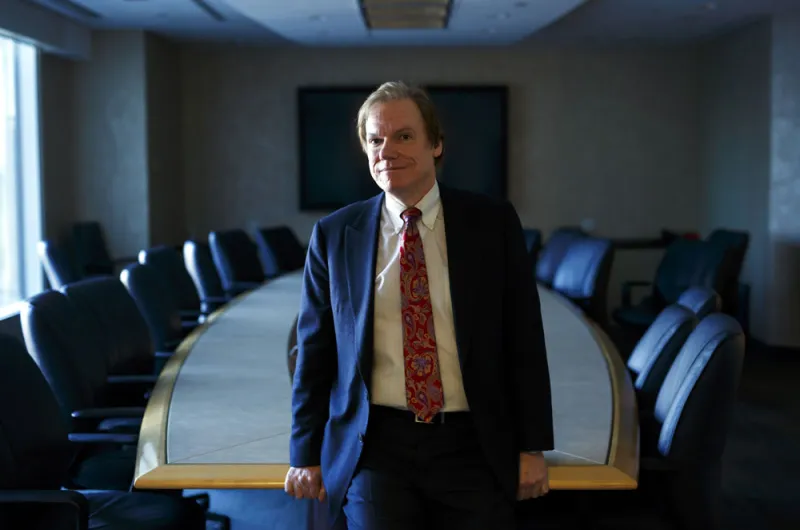When James Davis was hired as OPSEU Pension Trust’s chief investment officer six years ago, his mandate was clear: Provide Ontario employees with a secure retirement — without making them pay more to achieve it.
As CIO, Davis has shifted how the pension fund invests, moving to a model that prioritizes members receiving the benefits they’ve been promised without their contribution rates increasing.
Davis’s work at OPTrust, which serves Ontario employees, earned him the title of Chief Investment Officer of the year at the fourth annual Allocators’ Choice Awards, held on Wednesday. Davis was one of ten finalists nominated for the award.
He spoke with Institutional Investor about what makes OPTrust’s investment strategy differs from its peers, how the pension mitigates risk, and how the investment office is positioning the fund to tackle climate change and diversity challenges.
The Strategy
OPTrust operates differently than some of its pension fund peers, as it focuses mostly on ensuring that its members do not have to increase their contribution rates over time. This focus has led OPTrust to emphasize taking on the lowest risk possible to achieve its target return.
“What I think is missing in our industry is an understanding that risk and return are two sides of the same coin,” Davis said. “Everyone seems to be focusing on returns, returns, returns. They tend to be focusing on short-term returns and not paying adequate attention to risk.”
In a market downturn, this can be problematic, as returns can turn negative thanks to the added risk investors have taken on. Rather than using a risk budget as its starting point like many of its peers do, OPTrust starts with its target return, then develops a plan to hit that mark while taking on the least amount of risk possible.
It’s worked so far: The pension, which had just over C$23 billion (USD $18 billion) in assets under management as of December 31, 2020, is fully funded and has been for the past 12 years.
OPTrust’s portfolio includes liability-driven strategies, private equity, infrastructure, hedge fund, and real estate investments, plus a completion portfolio designed to complement its other strategies.
“It ‘completes’ the risk profile we need at the total fund to help us deliver on our mission of earning the return we need to keep our plan sustainable at the lowest risk possible,” Davis said.
Over the past few years, Davis has been working to build a risk mitigation portfolio, which is included within that completion strategy.
This portfolio includes assets like gold, TIPS, nominal bonds, defensive currencies, and trend strategies, Davis said. OPTrust employs machine learning to inform some of these investments. The portfolio returned 26.3 percent in 2020, Davis said.
Diversity and Inclusion Goals
Davis also made note of the “journey” OPTrust is taking with respect to diversity and inclusion at the organization.“What’s first and foremost is cognitive diversity,” Davis said. “When we are building out systematic strategies as an example, we need people who are thinking of the world through different perspectives.”
A little over a year ago, Davis created what he calls the office of the chief investment officer internship program. His goal is to bring in two new people each year who rotate through different areas of OPTrust’s investment division over the course of two years.
He is specifically seeking out candidates who do not all have MBAs, or are CFAs, or who are quantitative engineers. “We are looking at people who are bringing a different perspective,” Davis said. “We hope we’re attracting people who are interested in the pension world and pension investing.”
The recruiting process is unique, too. In addition to the typical interview questions and processes, OPTrust also administers a creativity assessment and an enneagram test to candidates.
“The process is more complex than it may be in a typical recruiting exercise,” Davis said. “It allows us to have another dimension to look at the quality of candidates.”
Combating Climate Change
As OPTrust looks toward its future, one of the organization’s major priorities is creating a climate change strategy, which Davis expects the organization to complete in 2022.His team is looking at three top-down scenarios that could play out: a Paris Orderly Transition, a Paris Disorderly Transition, and a Failed Transition, each of which the team has evaluated over the five-, ten-, and 20-year period. According to Davis, each potential scenario is detrimental to the plan as it stands now.
But that is likely the case for many organizations: In Davis’s view the market has not yet adequately factored in the effects of climate change on investment outcomes.
Although OPTrust has already invested one third of its infrastructure portfolio in renewables (“We have been an early mover into that space,” Davis said), there is more to do.
As with the organization’s overall investment strategy, though, Davis wants to make sure OPTrust does it right. “We want to make sure we’re doing it right for us,” he said. “Markets will begin to price this in with more vigor in the near term, more so than perhaps people are thinking. We need to be on top of it, but we need to do what’s right for our plan.”







